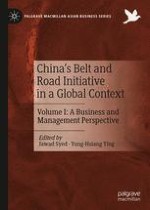2019 | OriginalPaper | Buchkapitel
4. From Central Asia to the World: China’s Regional Diplomacy as a Precursor for Global Connectivity
verfasst von : Hasan H. Karrar
Erschienen in: China’s Belt and Road Initiative in a Global Context
Verlag: Springer International Publishing
Aktivieren Sie unsere intelligente Suche, um passende Fachinhalte oder Patente zu finden.
Wählen Sie Textabschnitte aus um mit Künstlicher Intelligenz passenden Patente zu finden. powered by
Markieren Sie Textabschnitte, um KI-gestützt weitere passende Inhalte zu finden. powered by
